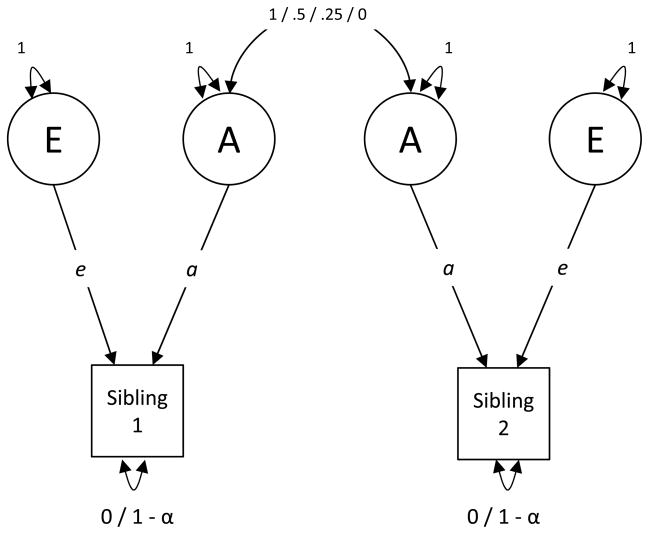Figure 1.
Univariate behavioral genetic model for single occasion data that decomposes variance in a trait (indicated as a square) into that which is due to latent genetic (A) and environmental (E) components (indicated as circles). The correlation between genetic factors is specified for each group depending on the known genetic association between siblings. The label placed on this parameter in the figure is for each sibling type found in the current study, namely, monozygotic twins (1), dizygotic twins (0.5), half-siblings (0.25), and unrelated siblings (0). When the environmental component is corrected for measurement error, the residual variance of the trait is set to equal 1 – reliability. Parameters that share the same label are constrained to be equal. When the outcome is standardized before analysis, as is the case in the current analysis, the squared a and e parameters represent the proportion of variance in the trait attributable to A and E, respectively.

